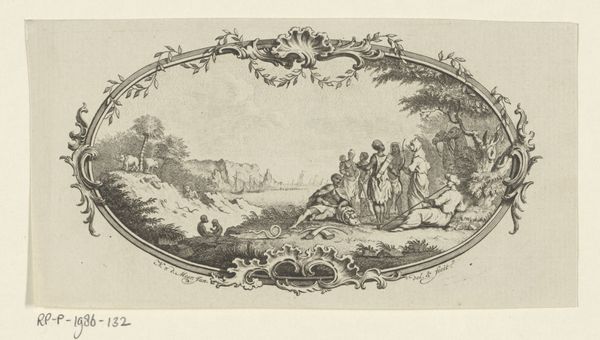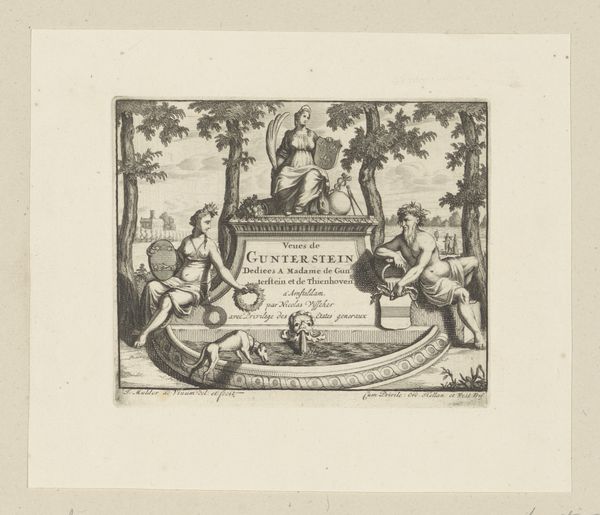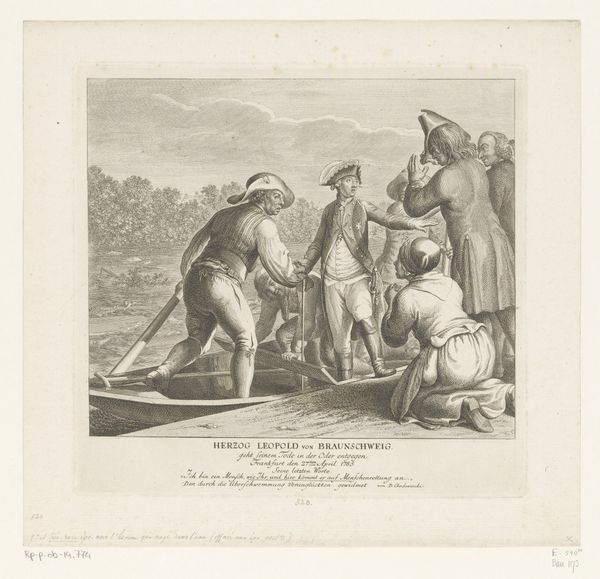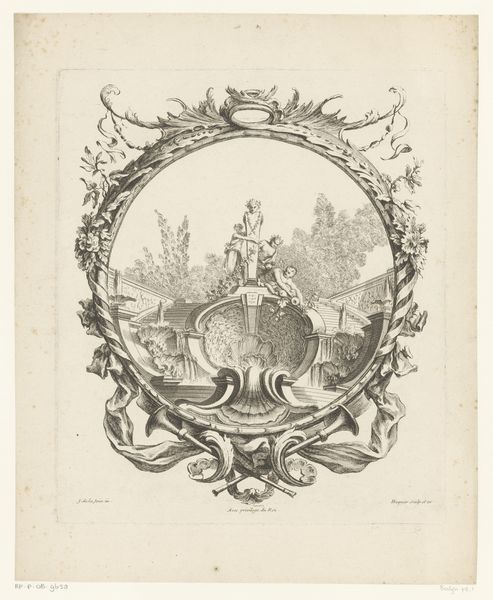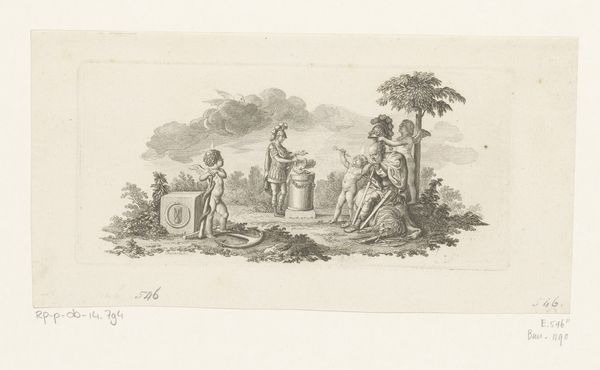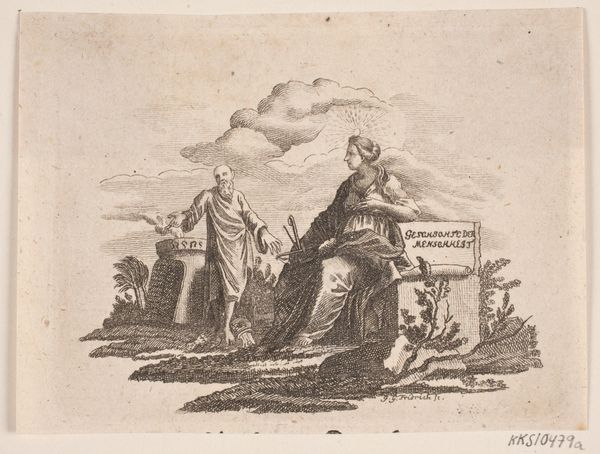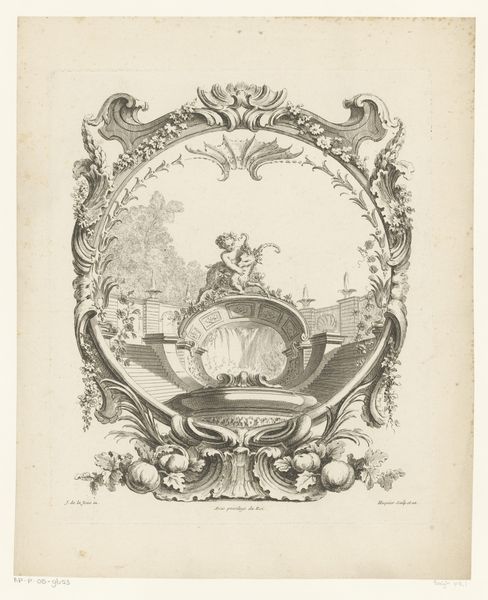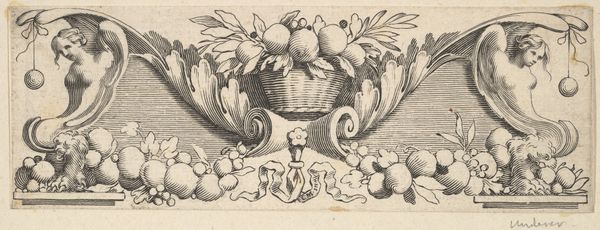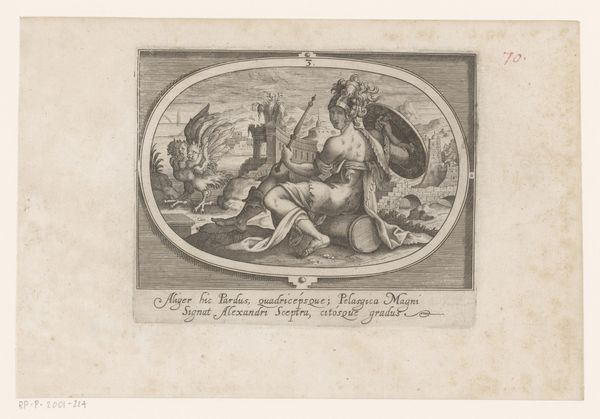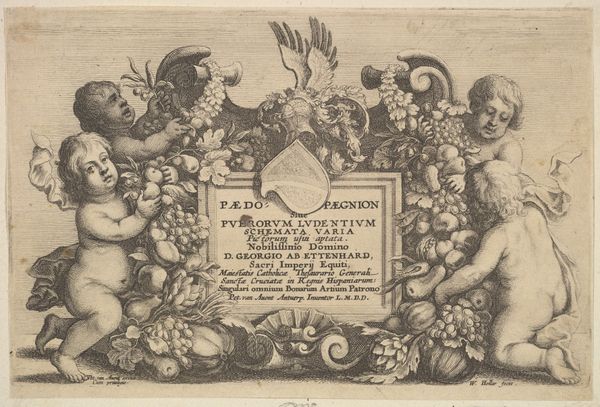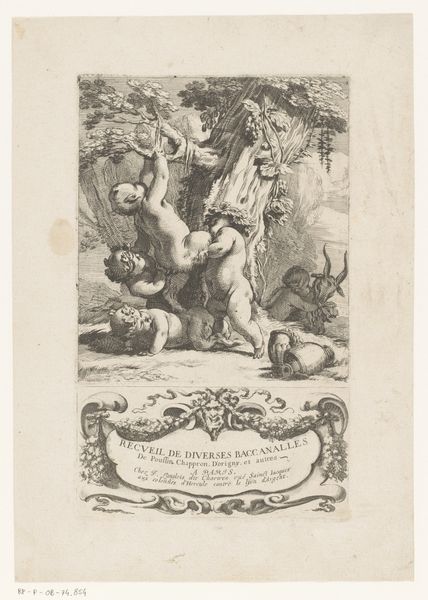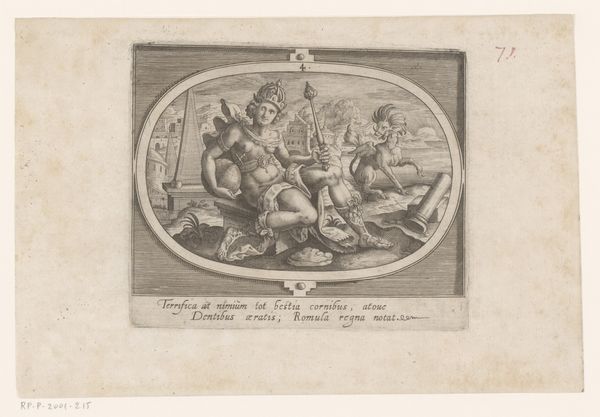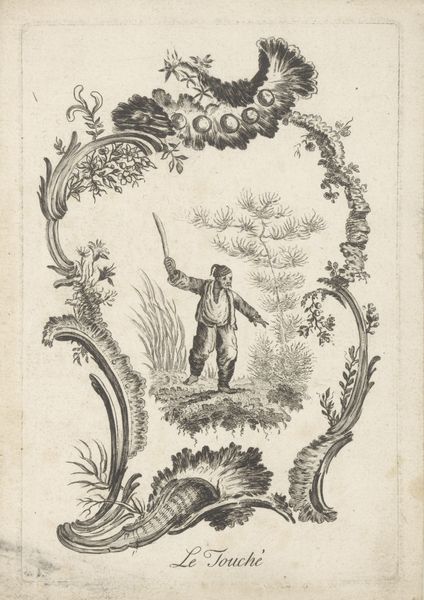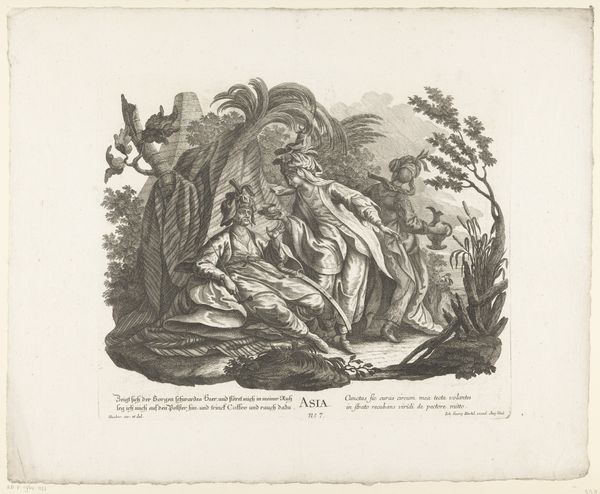
Allegorie op de overwinning van Lodewijk XIV bij de Slag bij Seneffe before 1774
0:00
0:00
Dimensions: height 121 mm, width 151 mm
Copyright: Rijks Museum: Open Domain
Curator: Here we have Charles Emmanuel Patas's "Allegory on the Victory of Louis XIV at the Battle of Seneffe," a print made before 1774. Editor: The engraving is fascinating, though my initial thought is it feels oddly celebratory, bordering on propaganda, in its attempt to mythologize warfare. There's a definite baroque flair with all the dramatic flourishes and symbolic items strewn about. Curator: Indeed. Considering the production, Patas used engraving, a process that involved meticulously incising lines into a metal plate. The skill demanded high levels of craftmanship and labor. Also, given its status as a print, copies would have been widely circulated as printed material, reaching numerous consumers. The intention here is undoubtedly dissemination, reinforcing royal power through a kind of symbolic product. Editor: Exactly. The act of producing and distributing such an image has direct implications. We see symbols like the barrel, cannon, and assorted military paraphernalia. Their display valorizes King Louis XIV through the framework of the military, suggesting France is the prevailing power. But how are people who suffered or died in the battle represented in this triumphal celebration? Where are their stories? Curator: The inclusion of allegory signals more than just surface representation. Winged figures denote a sense of divine approval and historical significance. Editor: I understand that Patas intended this imagery as celebratory and legitimizing Louis XIV’s authority. But considering its production and distribution alongside ongoing suffering for some, shouldn't art challenge authority? Should it give space for different stories of those most affected by battle? This isn't only a depiction of victory, but one inherently implicated in cultural power and social meaning, which is not always straightforward. Curator: A fair point. While it's easy to appreciate Patas's technique and the baroque embellishments he's using, one has to view it within its cultural framework. The making and consuming of art reflects, perhaps not only power and cultural consumption but inequality, too. Editor: Right. This image, at once beautiful and politically charged, serves as a reminder of the intricate ties that bind art, power, and lived experience.
Comments
No comments
Be the first to comment and join the conversation on the ultimate creative platform.
